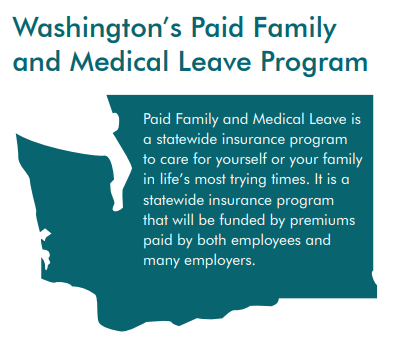

The program is administered by the Employment Security Department (ESD), the agency that will approve or deny leave and make the payments.Įmployers can provide their own paid family and medical program, but it must meet or exceed the benefits offered by the state plan and it must be approved by state authorities. Premium collection started early last year. Small employers are exempt from paying the employer portion, although they may elect to do so, but they do have to collect premiums from employees. The program is funded with premiums paid by large employers - those with 50 or more employees - and employees. The state program provides about 90% of the employee’s weekly wage with a minimum of $100 a week and a maximum of $1,000 a week. Not expected to work in Washington for at least 820 hours during a qualifying period.Employed in Washington on a limited or temporary work schedule.Instances where an employer may be granted a conditional premium waiver for an employee who is: Employees subject to a collective bargaining agreement until the agreement is reopened, renegotiated, or expires.Federally-recognized tribes (who may opt-in).Self-employed individuals (who may opt-in).All Washington employers, including out-of-state employers with Washington employees, must participate in the new program. The state program does not replace the FMLA.Ĭompliance with Washington’s program is broad-based. While the federal leave program offers 12 weeks of leave, the FMLA only applies to employers with 50 or more employees and leave under the federal program is not paid. The state program is different from the federal Family and Medical Leave Act (FMLA). Eligible workers in the Evergreen state will be allowed up to 12 weeks of paid leave for:Įight states - California, Connecticut, Massachusetts, Oregon, New Jersey, New York, Rhode Island, and Washington - and the District of Columbia have paid family leave programs, according to the National Partnership for Women and Families as of August 2019. Employers in Washington state have to comply with a new paid family and medical leave requirement, which went into effect January 1, 2020.


 0 kommentar(er)
0 kommentar(er)
